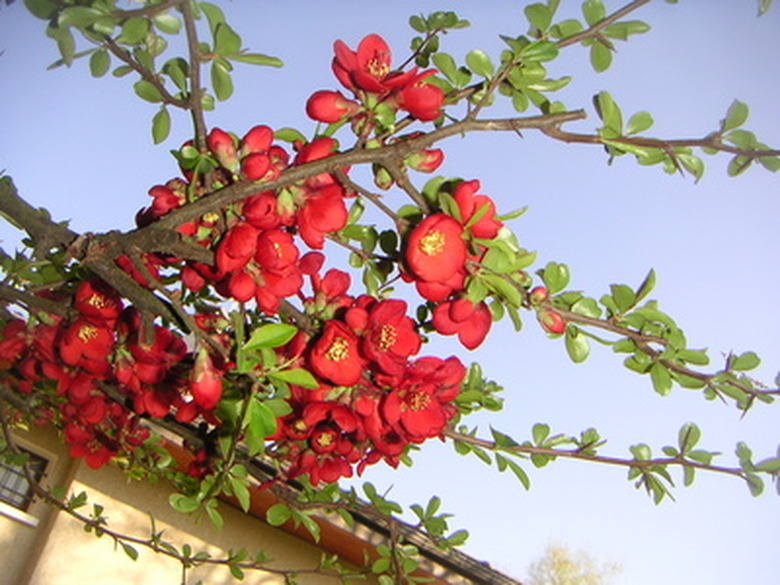What Trees Flower In Early Spring?
Nothing heralds the arrival of spring quite like an ornamental flowering tree in full, glorious bloom. There are many flowering trees that are popular with home gardeners and professional landscapers alike. Some bloom in the summer, while others bloom very early in the spring, even before the leaves begin to uncurl. Some flowering trees even bloom in late winter, depending on the climate. Early spring flowering trees are some of the most beautiful and popular trees in America.
Cornelian Cherry Dogwood
While most dogwood trees are early bloomers, Cornus mas is a very early bloomer, sometimes flowering as early as late February. This tree, which grows more like a shrub on multiple trunks, features groups of tiny yellow flowers that last for as long as three weeks. Cornus mas can grow up to 25 feet tall and 20 feet wide. It thrives in cool soil that is rich in nutrients and is well-draining. This dogwood can grow in partial shade or full sun, but does not do well in full shade. Cornus mas grows well in United States Department of Agriculture (USDA) growing zones 5 through 8a.
- Nothing heralds the arrival of spring quite like an ornamental flowering tree in full, glorious bloom.
- This tree, which grows more like a shrub on multiple trunks, features groups of tiny yellow flowers that last for as long as three weeks.
Eastern Redbuds
Eastern redbuds (Cercis canadensis) are highly desirable for their bright pink, white or lavender flowers. These trees are prolific bloomers in early spring, and the flowers, which appear before the leaves, can last for weeks. They are also hardy and can tolerate shady conditions. Eastern redbuds have a maximum height and spread of 30 feet. They thrive in USDA growing zones 5 though 9.
Crabapples
Crabapples (Malus sp.) are the most popular early spring flowering trees in the Midwestern portion of the United States, according to Chris Starbuck, a horticulturist with the University of Missouri. There are more than 200 named species and cultivars of the tree, which features pink, purple or white blooms. Although beautiful, crabapples can succumb to many insect pests and diseases. For that reason, careful cultivar selection is recommended. Mr. Starbuck suggests the Adams variety for a pink flowering tree, Professor Sprenger for a white flowering tree and Camelot for variegated flowers. Crabapples can vary in height, depending on the cultivar, and can range from 10 feet to more than 35 feet tall. They prefer well-draining soil and full sunlight, and are both hot and cold-hardy to USDA growing zone 4.
- Eastern redbuds (Cercis canadensis) are highly desirable for their bright pink, white or lavender flowers.
- Crabapples can vary in height, depending on the cultivar, and can range from 10 feet to more than 35 feet tall.
Serviceberry
Serviceberries (Amelanchier sp.) are excellent shade trees, as they are often found growing in the forest understory. This small tree tolerates shade extremely well and grows to an average height of 20 feet, with an equally wide spread. The tree can be trained on one or multiple trunks and pruned as a shrub. Serviceberry trees feature masses of white flowers. They are prolific bloomers and have stunning fall colors of yellow, red and orange, along with sky-blue fruit. These trees grow well in cool, moist, well-draining soil that's rich in organic matter in USDA growing zones 4 though 7.
- Serviceberries (Amelanchier sp.)
- They are prolific bloomers and have stunning fall colors of yellow, red and orange, along with sky-blue fruit.
